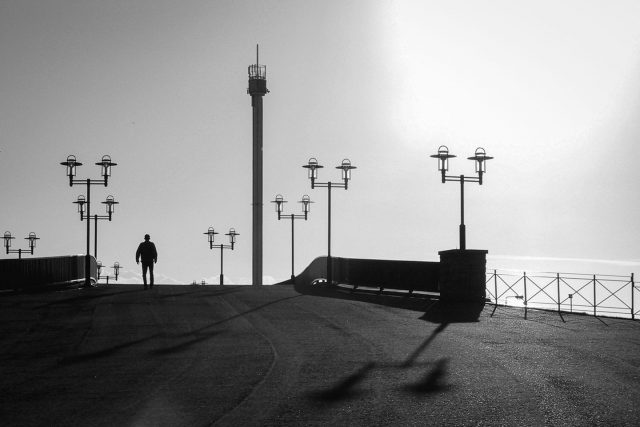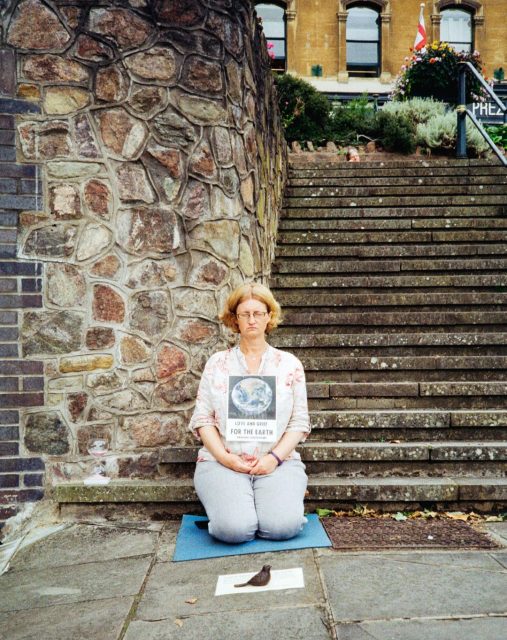Why Do People Take Selfies? The Good, the Bad and the Ugly
As a documentary photographer and research psychologist, I’ve observed firsthand how rising social media and smartphone usage has increased the popularity and widespread practice of taking selfies in contemporary society. However, people have been capturing pictures of themselves long before the Internet and smartphones became prevalent. While taking selfies can make people happy, doing so can divert attention from activities that previously brought joy. In this blog post, I’ll explore the reasons behind people taking selfies, examining both the positive (“the good”), negative (“the bad”) and controversial (“the ugly”) aspects of selfie-taking.

What Is a Selfie?
A selfie is a self-portrait photograph, typically taken with a smartphone (see Figure 1) or a digital camera. Yet, the defining characteristic of a selfie is that it is taken by the person in the photo, often by holding the camera or phone at arm’s length or using a selfie stick. Selfies can also include other people in the frame, but the picture-taker must be part of the group. The term “selfie” gained popularity in the early 2010s and has become widespread among people of all ages and genders. Selfie-takers typically share them on social media platforms like Instagram, Facebook, and Snapchat, becoming popular forms of self-expression and communication.
Who Invented the Selfie?
Experts accept that Robert Cornelius took the first photographic self-portrait, or “selfie,” in October 1839. One day, in the back of his family’s shop in Philadelphia, US, he set up his camera, positioned himself in front of it, and captured his image. Although people didn’t call Cornelius’ self-portrait a “selfie” back then, they now regard it as a precursor to the modern selfie. The image he took reflects our long-standing fascination with self-representation and our enduring interest in taking, viewing, and sharing pictures of ourselves.
Vivian Maier, a street photographer known for her work discovered posthumously, was also fascinated with self-portraits. Her numerous self-portraits taken over several decades show her reflection in mirrors, windows, and other reflective surfaces, capturing her image amid her surroundings. Furthermore, Maier’s work provides valuable insights into the motivations behind selfie-taking long before the advent of smartphones and the Internet.
Why People Take Selfies Predates the Internet
Interestingly, selfie-taking predates smartphones and the Internet (see Figure 2 [taken with an early digital camera]). In 1995, Casio introduced a digital camera with a screen for previewing images, plus a swivel lens that users could rotate and point at themselves—perfect for taking selfies. This camera design emerged three years before Google launched and fifteen years before Instagram enabled users to share their photos online. While digital technology and social networking sites have facilitated selfie-taking, viewing, and sharing, the practice began earlier. However, before the invention of the camera, artists created self-portraits through painting and other artistic mediums.

Selfie vs Self-Portrait. What’s the Difference?
Reflect on your most recent selfie. How many shots did it take before you found one you were satisfied with? Research suggests that we typically snap between two and five selfies before landing on the perfect shot. This disposable nature is inherent to selfies. It’s easy to swap one image for another. However, artists crafting self-portraits aim for longevity, aspiring for their work to endure beyond fleeting moments. However, the disparities between selfies and self-portraits extend beyond ephemerality. Considering the selfie-takers motives, reasons, and captured experience is crucial.
Three Types of Selfie-Takers
Research classifies selfie-takers into three distinct archetypes or groups, each with unique characteristics or motivations behind the act.
1. Communicators (Connecting Through Selfies)
The first group, known as “communicators,” employ selfies as a platform to connect with their audience, leveraging their influence to advocate for causes they believe in passionately. Through selfies, these individuals aim to spark conversations, raise awareness, and promote positive change.
2. Autobiographers (Capturing Life’s Moments)
On the other hand, “autobiographers” use selfies as a form of personal documentation, capturing pivotal moments and experiences in their lives. These individuals see selfies as a visual diary, a way to preserve memories and create a narrative of their journey over time. For them, selfies serve as a means of self-expression and reflection, allowing them to share their story with others (see Figure 3).
3. Self-Publicists (Crafting Personal Brands)
Lastly, “self-publicists,” comprising celebrities, influencers, and public figures, harness the power of selfies to cultivate and maintain their public image. They seek to engage and entertain their audience while shaping their perceived persona by sharing glimpses of their daily lives. Selfies become a tool for self-promotion, allowing these individuals to showcase their lifestyle, expertise, and personality, reinforcing their status and influence in the public eye.

Why People Take Selfies Is Linked to Personality
Further studies have identified three main reasons for selfie-taking associated with specific personality traits.
1. Seeking Self-Approval
One prevalent reason behind selfie-taking is the desire to validate one’s significance. Individuals often use selfies to capture moments that accentuate their positive attributes or achievements, serving as a means of self-approval. They seek validation and affirmation, bolstering their self-esteem by sharing these images with others. Additionally, a low score in personality traits like conscientiousness, emotional stability, openness to experiences, and self-esteem increases the need for self-approval, contributing to more frequent checking for ‘likes’.
2. Embracing Belonging
In the digital age, conformity to social norms plays a significant role in shaping behaviour, including selfie-taking. Many individuals engage in this practice to adhere to societal expectations and cultivate a sense of belonging within their social circles. Through selfies, they express alignment with prevailing trends and ideals, fostering connections and acceptance within their online communities. Moreover, individuals who exhibit higher levels of openness to experiences tend to have a stronger inclination to conform to social norms or “fit in”.
3. Documenting Memories
Selfies are more than mere snapshots; they are visual records of cherished memories and significant life experiences. Individuals use selfies to document their lives, capturing moments of joy, triumph, and human connection. By immortalising these moments in digital imagery, they create tangible reminders of their past, preserving memories for reflection and reminiscence in the future. Furthermore, agreeableness and extroversion are associated with the desire to document one’s memories.
Moreover, understanding how personality traits influence motives for selfie-taking sheds light on its positive and negative aspects, revealing the good, the bad, and the ugly of selfie-taking culture.
Why Do People Take Selfies – Exploring Its Complexities
1. The Good
Research shows that documenting daily memories can enhance people’s enjoyment of everyday life (see Figure 4). But not if it interferes with the experience or is already entertaining. Nonetheless, photography has the potential to heighten happiness by fostering greater engagement and concentration on the present moment. For instance, taking selfies during a concert or gig could deepen one’s connection with the musical experience. Yet, it’s essential to acknowledge that photography may also accentuate negative experiences, drawing attention to aspects that detract from the enjoyment.

2. The Bad
Engaging excessively in taking and sharing selfies can develop into a compulsive behaviour known as selfie addiction, interfering with daily routines. Initially dismissed as a humorous concept, “selfitis” has garnered recognition among researchers, leading to the development of tools like the Selfitis Behavior Scale to assess its severity. While not classified as a medical condition, selfitis reflects a phenomenon characterised by obsessive selfie-taking and sharing. Although taking photos of oneself is generally harmless, individuals with high narcissism and low self-esteem are more prone to this behaviour. Additionally, the act of taking and sharing selfies may exacerbate narcissistic tendencies over time.
3. The Ugly
Your smartphone’s camera lens can distort reality, portraying you differently than you appear in real life. For instance, taking a selfie from a closer distance, like 1 foot rather than 5 feet, can magnify the perceived size of your nose by approximately 30%, a phenomenon known as the Selfie Effect. Comparing oneself to filtered and altered selfies can be problematic, as digitally manipulated images blur the boundary between reality and illusion. Additionally, plastic surgeons caution against applying filters to selfies. They warn of the potential to exacerbate body dysmorphic disorder, a mental health condition characterised by an obsession with perceived flaws in one’s appearance. This phenomenon, also termed Snapchat dysmorphia, reflects a growing trend of individuals seeking cosmetic procedures to align with their digitally enhanced self-image.
The Impact of Selfie Curation on Why People Take Selfies
Another contentious aspect of selfie-taking revolves around its potential influence on shaping our identity. By curating and sharing selfies, individuals shape how others perceive them (see Figure 5). Thus, selfies serve as a tool for individuals to assert and promote their identity, influencing their perception of self-worth through social comparison processes. These processes, termed ‘social sensitivity‘ and ‘self-esteem,’ shape how individuals assess their value relative to others. For example, research reveals that taking and sharing selfies can heighten individuals’ tendency to evaluate others (increasing social sensitivity). Conversely, refraining from sharing selfies may diminish individuals’ self-esteem, altering their self-evaluation. Consequently, taking selfies can distort individuals’ perceptions of themselves in the real world.

Social comparison processes can also influence our memory of past events, resulting in a distorted perception of our identity. This side-effect is because the selfies individuals take often project an idealised image of themselves tailored to meet others’ expectations. Thus, we’re more likely to remember the past in a way that aligns with how we want others to see us rather than who we are. While a certain level of distortion is good for our well-being, allowing us to move past unpleasant experiences, excessive indulgence in posed selfies can distort our self-perception, as they fail to represent us authentically.
Key Points – Why Do People Take Selfies
Main reasons people take selfies:
- To project an idealised image. Sharing an idealised image through selfies is common practice, involving careful planning and posed expressions. However, as individuals strive to create a flawless representation of themselves, they risk distorting their identity.
- To conform to social expectations. Individuals may take selfies to meet societal expectations and present themselves in a favourable light. However, sharing an ideal image can lead to prioritising external approval over genuine self-acceptance.
- To preserve positive memories. Selfies can serve as a way to recall past events through rose-tinted glasses, enabling individuals to remember themselves and their experiences more positively. However, this tendency to capture and reflect on idealised moments can create unrealistic memories, overshadowing the authentic aspects of their lives.
- To enhance well-being. A certain level of self-distortion through selfies can be good. It helps individuals move past unpleasant experiences and promotes overall well-being by focusing on positive aspects of their lives. However, excessive distortion can be detrimental, potentially leading to unrealistic self-perceptions and hindering personal growth.
- To express ourselves and connect with others. Selfies have become a prevalent mode of self-expression, communication, and social connection in the digital age. However, this shift also raises concerns about privacy, superficiality, and the impact of curated online personas on authentic social interactions.
Summary
In essence, selfies have emerged as a prevalent means of self-expression, communication, and social connection in the digital era. While this trend is generally harmless, individuals must reflect on the underlying motivations behind selfie-taking to ensure it aligns with their genuine selves and preserve self-awareness.
Why Do People Take Selfies – Photos
Below are images I captured of individuals taking selfies, serving as a visual depiction of the scenarios in which people find enjoyment in taking self-portraits.





Remember to check out my other psychology articles!
Like this article? Spread the word. Thank you!

























